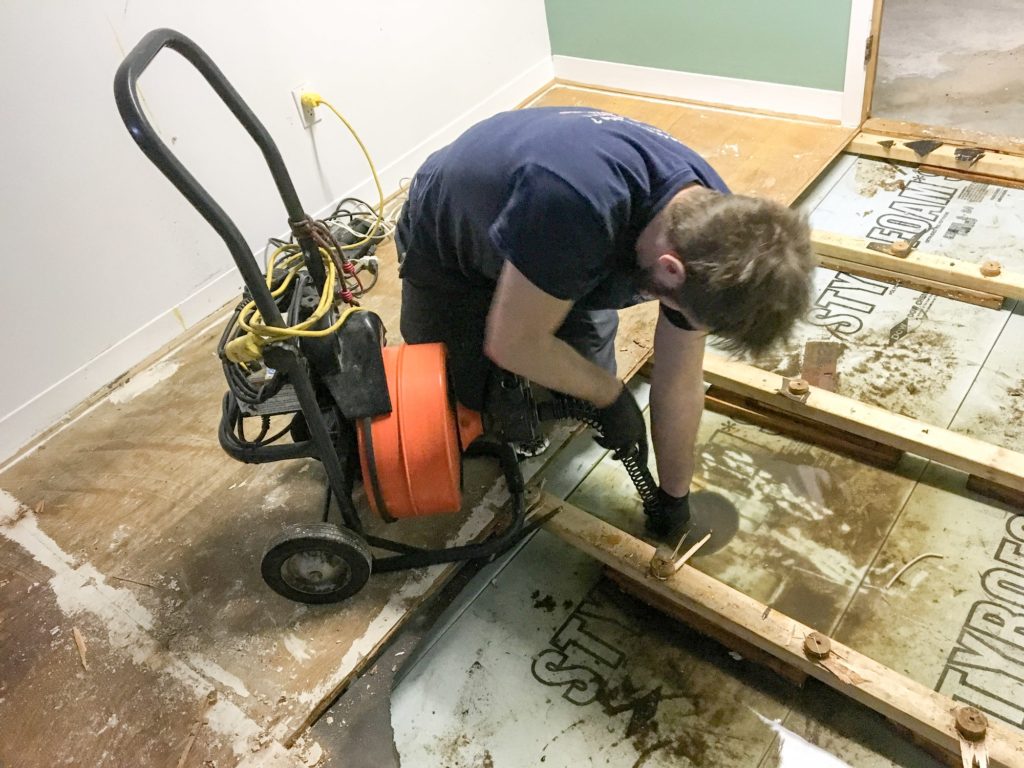Wood Floor Water Damage
When water gets into your hardwood floors, call the experts for wood floor repair.
24/7 Response
Professional Estimates
100% Customer Satisfaction
Insurance Approved
A+ BBB Business
Water Damaged Hardwood Floors
Well-kept hardwood floors are a homeowner’s dream—but water damage can quickly turn them into a nightmare. Whether it was from a spill, flooding, an appliance leak, or a burst pipe, water can seep into your wood floors, causing damage to the planks and the subflooring beneath. This could result in uneven surfaces, discoloration, and mold growth. It also makes for an unpleasant sight. If you want to avoid the worst of this wood floor damage, you need to know how to spot it and what you can do to fix it.
How to Spot Water Damage on Hardwood Floors
Do you suspect water damage on hardwood floors? There are a couple of ways you can spot water damage without being an expert. First, check for any unusual color patterns. Water damage can cause discoloration, so if you see dark or faded spots between planks, they’ve likely been damaged by water.
Another easy indicator of water-damaged wood flooring is mold or mildew growth. Some of those dark spots you noticed may actually be signs of mold. Look for a black or greenish color on the planks. These will need to be replaced so that the problem doesn’t spread further.
Types of Hardwood Water Damage
Water damage on wood floors can appear in various forms, including cupping, buckling, crowning, splitting and cracking, or gapping. Here is a breakdown of each.
Cupping
When water is absorbed by the edges of the floorboards, it can cause it to rise higher than the center of the board. This effect is called cupping, and it creates an uneven surface.
Buckling
Your floorboards can absorb so much water that they begin expanding past expansion gaps and pull away from the subfloor. This is called buckling, and it can make the floor feel like it’s been raised. When it settles back into its normal size, the floorboards may shrink, leaving gaps between the floorboards.
Crowning
You can think of crowning as the opposite reaction of cupping, where the middle of the water damaged floorboard rises above the edges. Usually, this happens when moisture gets absorbed into the floorboard surface.
Splitting & Cracking
When the floorboards absorb enough moisture or humidity, they can expand to the point of cracking or splitting. It’s pretty easy to see the cracks showing up in individual floorboards, and there’s no way to fix it. Split or cracked floorboards will need to be replaced.
Gapping
Are you noticing small gaps between individual planks? This could be the result of lower-than-normal humidity that causes the planks to shrink. Once humidity levels return to normal, the planks should expand to their normal size.
Repair Hardwood Water Damage
Once hardwood water damage occurs, you have two options—handle it yourself or call the professionals. Some instances can be handled on your own and don’t require complete replacement. If you’re not a fan of DIY repair or the problem is too severe, you can trust the Same Day Restoration team. We provide 24/7 emergency water damage services. Our team can locate, mitigate, and repair the water damage source. Call us to return your property to its pre-loss condition.

Why Choose Same Day Restoration
- A+ BBB Rating
- 80+ 5-star reviews
- 24/7 live calls
- On our way in 30 minutes or less
- Free estimates
- We bill directly to insurance
- Indoor Air Quality Improvement
- Professional project managers oversees your project
- Insurance Restoration
- Above all, your satisfaction is 100% guaranteed
